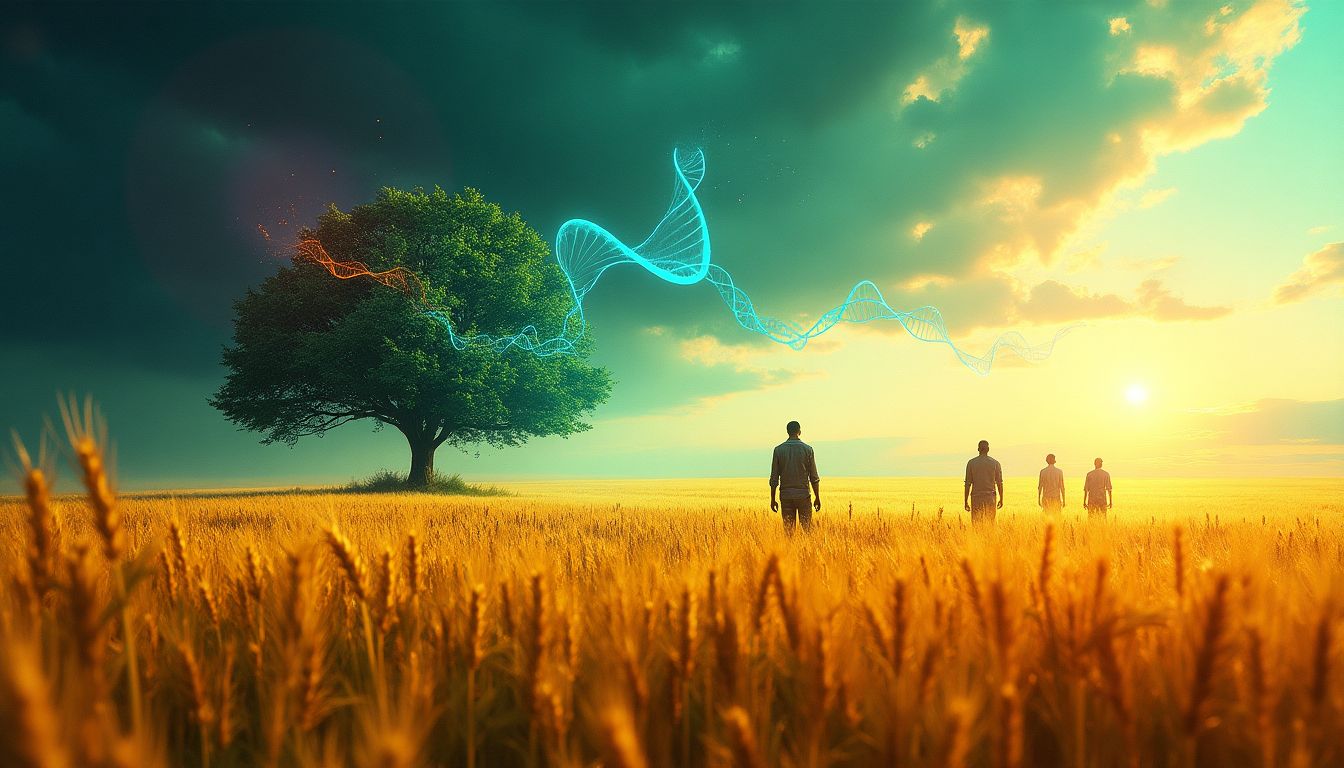Time capsules of the mid-20th century hold gripping tales of doom where humanity tiptoed along the precipice of mass starvation. Wielding the scepter of fear was a not-so-humble scribe's tome, The Population Bomb, complete with predictions of inevitable famine. But just when it seemed our collective stomachs had written checks that nature couldn't cash, science emerged as the hero in this harrowing drama. Enter the Green Revolution, a pivotal twist that transformed the barren plains into cornucopias of delight, ensuring dinner tables around the world stayed bountifully laid. This tale of agricultural triumph stems from the innovative work of researchers, led by the legendary Norman Borlaug, who, through painstaking crossbreeding, crafted a juggernaut wheat plant that matured into a superhero of grains. These robust, pest-resistant crops with heftier kernels didn't just stave off hunger - they threw a wrench into the predestined cogs of global famine as foreseen by pessimists past.
Yet, here we are at the dawn of another intimidating era dominated by the gargantuan specter of climate change. Today's conversation forebodes a new chapter in our culinary chronicles: the post-modern Green Revolution. But how might this sequel unfold, you ask? Some envisage bravely hacking into the DNA of crops, modern-day Prometheans wrestling with plant biology itself. Meanwhile, debates swirl like dust over prairie lands about the ecological pros and cons of these genetically modified saviors, essentially exiling them from nooks and crannies in regions like Europe and Africa. Some hold fast that the answer lies not in franken-crops but rather in rebooting traditional agricultural practices with a splash of 21st-century pizzazz and modern science.
The Golden Legacy of the First Green Revolution
The original Green Revolution greeted the world with all the panache of a superhero landing. From the 1960s to the 1990s, it strapped a metaphorical cape to the backs of farmers worldwide, slashing grain prices and, in turn, poverty rates. Norman Borlaug's ambition was as boundless as a Kansas sky, discovering a wheat variety that didn't just meet expectations but exceeded them, giving more kernels per plant. What made Borlaug's wheat the ticker tape parade grand marshal of world agriculture was not only its productivity but also its ability to grow shorter—thus preventing the top-heavy calamity of crops buckling under their bounty. Think of it as the tightrope walker of wheat, conquering balance and abundance in harmonious tandem.
Science’s embrace during this revolution did not merely stave off hunger; it sculpted a stage where millions, spared from the brink, could step into futures rich with promise. For an encore, maybe? Just maybe, we could scratch climate change off the existential to-do list?

Climate Change: The Harrowing Sequel
The curtain rises on the modern-day terra incognita of parched land, tempest storms, and acidic soils. Yes, this playwright has left us in suspense with climate change as the full-blown antagonist. The question of the era beckons: how do we script a new Green Revolution in a world now run amok? Hacking plant biology has set imaginations afire. Imagine designer crops immune to extreme temperatures, drought-resistant strains celebrating tenacity in arid lands, and pest-proof livestock parading through pastures like unscathed gladiators. A spectacular dream, if only it didn't carry a sidecar of environmental debates known to dampen even the sunniest of discourses. Unfortunately, sustainable practices often seem trapped in this debate’s crossfire.
But some, longing for the solace of eras akin to Monty Python’s idyllic agrarian scenes, suggest a return to our farming roots, albeit garbed in modernity's trappings. It's straightforward: if at first you don't succeed, blend tradition with innovation—a more modern version of that metaphorical high-wire act.
From Fields of Gold to Fields of Contention
A clash of titanic proportions grips farming today between the zealots of genetic modification and guardians of organic authenticity. At heart, what’s being reaped in this debate is not just harvests but trust. While Europe wears its GM-crop skepticism like a well-fitted blazer, Africa is caught in the crosshairs of necessity versus traditionalism. An agricultural Apollo Creed, it’s punching back with every available technology except, timing, not unlike Rocky himself, it finds the occasional stumble on environmental concerns. The symphony of farming is no longer composed purely of hoe and plow but with algorithms, satellites, and a sprinkling of artificial intelligence, making the bard's imagination pale in comparison.
Parallel to the endless skirmish between old and new lies a budding conscience: environmental sustainability versus food security. This dichotomy, a colossal stone in agriculture's shoe, irks policymakers and scientists alike. Yet, somehow, the fabric of progress persists—thread by thread, crop by crop, trial by ingenious trial.
The Green Blueprint for Tomorrow: Planting Ideas
Perhaps the saving grace in this culinary conundrum dances elusively at the fringes—a realization that for every crop sowed, countless ideas must blossom. This multifaceted myriad of brainchild sprouts must collectively sculpt human hope into sustainable action. While legitimate criticisms await around corners, the roadmap unfurling speaks to a future that is incremental yet impactful. Adjust the color dial just right, and suddenly The Population Bomb's predictions seem courageous, yes, but also misdirected amidst humanity's unflagging innovation.
Which leads to the exhilarating embrace of our current moment. What if the solutions meandered quietly, twined within partnerships where technology holds hands with tradition? Perhaps they reside within entrepreneurial thinkers and community-driven initiatives rising from grassroots, yearning not only to feed society’s body but its spirit, too. Let us imagine a world lush with potential where climate change is not an insurmountable adversary but the very catalyst for our greatest breakthroughs.
Join the Revolution, Join the Discussion
Dear reader, are you ready to cement your legacy in the annals of this budding revolution? How will you participate in the narrative? Are we nurturing the right ideas, or should we splice our beliefs with new insights? I invite you to meander through this garden of possibility and share your thoughts in the comments below. As inhabitants of iNthacity's "Shining City on the Web," (apply to become a permanent resident), participate in this burgeoning community of learners and leaders eager to lend their voices. Together, we can cultivate a future where dinner tables overflow, food is no longer a weapon, and every stomach swells with the anticipation of the next meal, unconstrained by fear of deficiency.
Wait! There's more...check out our gripping short story that continues the journey: The Dawn of Wheatfire
Disclaimer: This article may contain affiliate links. If you click on these links and make a purchase, we may receive a commission at no additional cost to you. Our recommendations and reviews are always independent and objective, aiming to provide you with the best information and resources.
Get Exclusive Stories, Photos, Art & Offers - Subscribe Today!

























Post Comment
You must be logged in to post a comment.